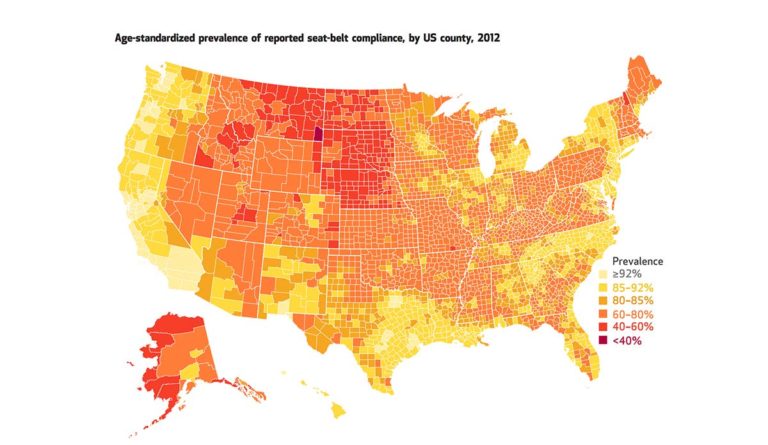Click It or Ticket
Motor vehicle crash fatalities increased 7.2% in 2015, the largest percentage increase since 1966. This recent uptick is cause for concern and is reason to re-examine seat belt policies.

Read Time: 3 minutes
Published:
Bracie Smith of West Monroe, Louisiana tragically passed away in a head-on collision with another vehicle. Unbuckled, he was determined dead at the scene. In Bangor, Maine, one particularly deadly weekend in November of 2016 saw five car crashes resulting in six deaths. Five of the six were not wearing seat belts at the time of the crash.
Although there are many factors at play in motor vehicle accidents, seat belts are a proven way to reduce the risk of fatality. Research shows that seat belts result in a decrease of 45-60% in fatality risk for front seat passengers. The Center for Disease Control and Prevention (CDC) estimates that seat belts saved more than 12,500 lives in 2013.

Photo via Policy Impact: Seat Belts. Center for Disease Control and Prevention.
Seat belt usage in the United States increased from 79.2% in 2002 to 85.9% in 2012, but usage is still lower than in other high-income countries. Approximately half of the 32,000 motor vehicle crash fatalities in 2013 in the U.S. did not use seat belts. There was a 7.2% increase in fatalities in 2015, the largest percentage increase since 1966. This recent uptick in motor vehicle fatalities is cause for concern and is reason to re-examine seat belt policies.

Photo via 2015 Motor Vehicle Crashes: Overview. National Highway Traffic Safety Administration.
The U.S. Department of Health and Human Services has set a seat belt compliance goal for front passengers of 92% by 2020. Only 68 of the 3,110 (3%) counties in the U.S., are reaching this goal. A recent Health Affairs study by Jacob Sunshine and colleagues shows the wide variance in seat belt usage across the country.
A few trends emerged from the study which help inform what direction policy should take. There were high rates of non-compliance in secondary enforcement states meaning that police officers are only allowed to write seat belt citations when the vehicle is pulled over for another traffic violation. There are 15 states with secondary enforcement laws, including: North Dakota, South Dakota, Utah, Nebraska, Idaho, and Alaska. Counties with higher compliance are found in states such as North Carolina, California, and Oregon, all of which have primary enforcement laws.
This is not just a question of urban vs. rural areas. Rural areas, in general, have a lower rate of compliance than urban areas, but rural areas in primary enforcement states have a higher rate of seat belt usage than rural areas in secondary enforcement states.
Seat belts are proven to decrease the risk of fatality in motor vehicle crashes. This research by Sunshine and colleagues suggests that primary enforcement laws can help save lives by increasing seat belt usage.
Databyte via Jacob Sunshine, Laura Dwyer-Lindgren, Alan Chen, and Ali H. Mokdad, Seat-Belt Use In US Counties: Limited Progress Toward Healthy People 2020 Objectives. Health Affairs.



